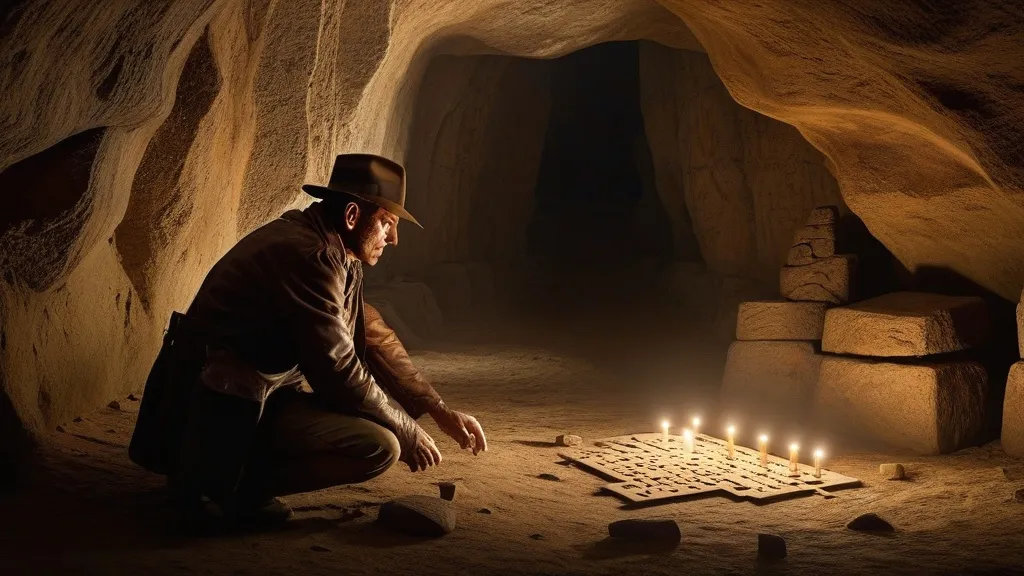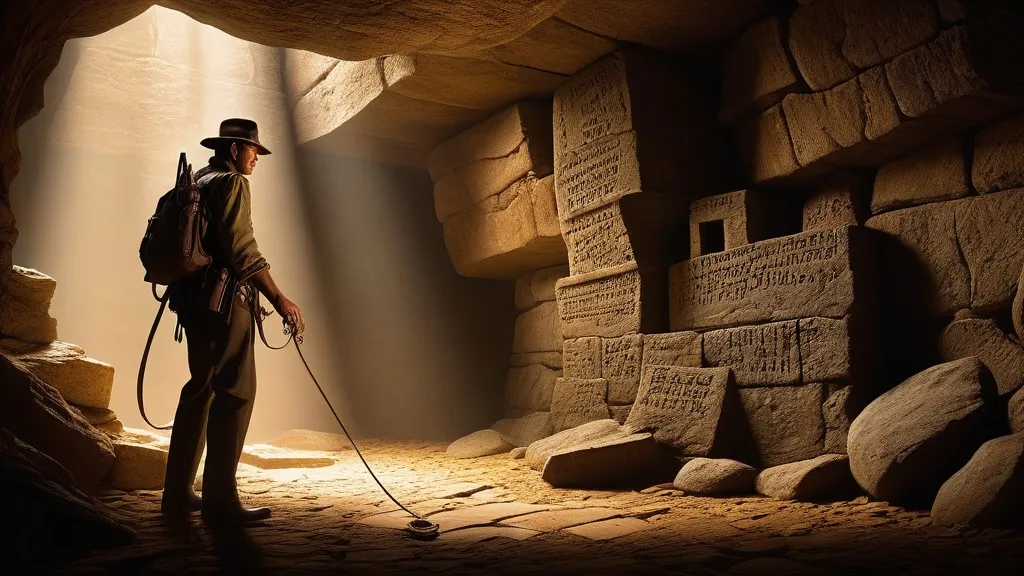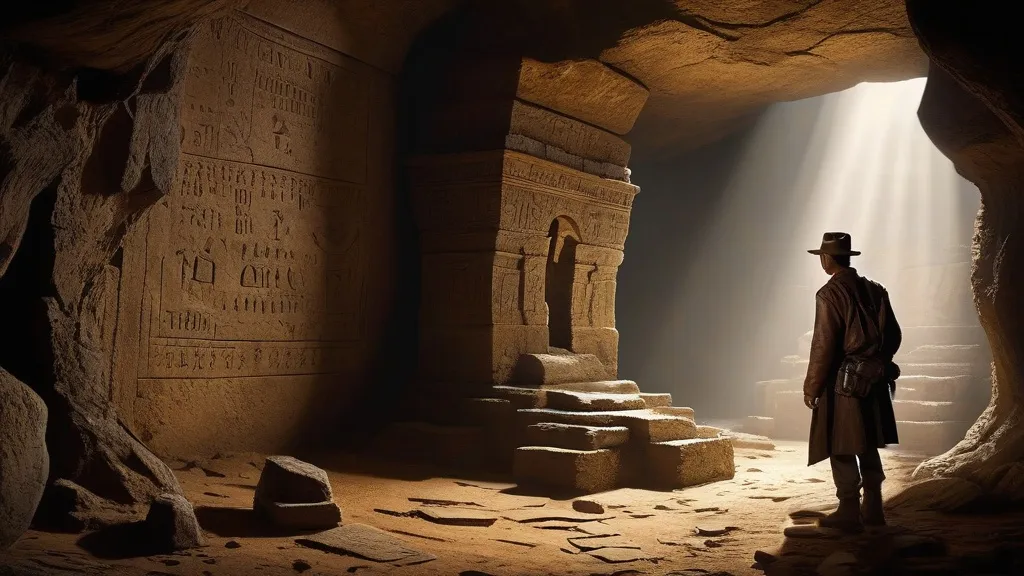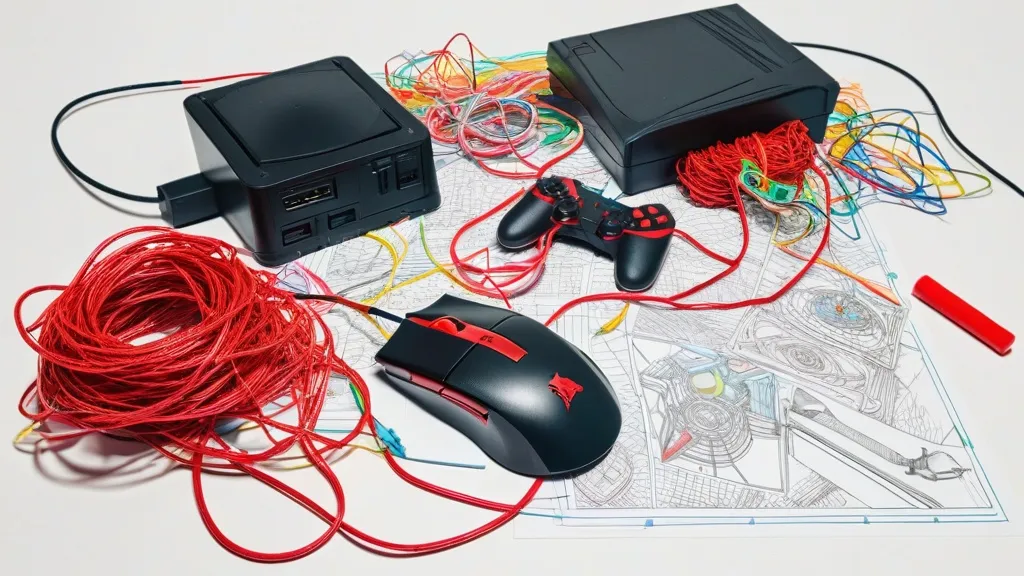Okay, here’s my quick take before we get lost in the ruins: this indiana jones game review is me walking through the adventure vibes, the puzzles, the combat, the platforming, and the whip-happy chaos I love. In my experience, Indy games live or die on story, traversal, and whether the treasure hunt actually feels like a hunt. I’m talking secret doors, switch puzzles, traps, the whole pulpy deal. If that sounds like your kind of adventure game checklist, you’re in the right tomb.
Why Indy still works on a controller (and, yes, a keyboard)

I’ve always found that the Indiana Jones formula is weirdly simple but hard to nail. Give me a map, a mystery, and a mess of clever obstacles. Then let me solve problems with a whip, not just a gun. A lot of action-adventure games chase this. Few stick the landing.
Back when I first started covering games, I remember chasing every scrap of gaming news about archaeologist-branded adventures like a grad student chasing grant money. Some of those headlines aged fine. Some aged like milk in the sun. But the pattern was clear: when devs respected puzzles and exploration, Indy hit.
What I think is missing from most modern action games is patience. Indy works best when I’m crouched over a wall with weird symbols, mumbling to myself, trying to line things up without Google. Slow discovery. A dusty notebook. A lever I definitely shouldn’t pull but, hey, here we are.
The old gems that still slap
First love? For me it was Indiana Jones and the Fate of Atlantis on a creaky PC. I got stuck on a puzzle for two days, swore at a stone wheel, and felt like a genius when it clicked. That game taught me the difference between clever puzzles and spite.
I’ve also spent too many nights replaying the early-2000s beat-’em-up era. Emperor’s Tomb had that scrappy, punchy feel—janky, sure, but it moved like a bar fight in a museum. I don’t need perfect animation. I need a satisfying uppercut and a reason to climb a ledge that looks like it’ll crumble (because it will).
And yes, the LEGO twist is still cozy. It leans into slapstick and simple platforming, but here’s the thing: it respects the loop. Explore, collect, solve, laugh. Sometimes the simplest take on treasure hunting is the one that keeps you grabbing the controller.
The modern wave: the whip returns
I’ve been tracking Indiana Jones and the Great Circle since the first tease. First-person action-adventure is bold for this series, but it makes a lot of sense. If you want me to feel the whip, put me behind the eyes. I want to peek around corners, eyeball ledges, and misjudge jumps like a fool—because that’s the point. It’s not just combat; it’s that “oh no oh no oh yes” feeling when a plan barely works.
In my experience, the best Indy-style games balance three pillars: traversal that feels risky, puzzles that respect your brain, and fights that feel like scrambles, not shooting galleries. No one wants an archaeologist who plays like a tank with knee armor. I want scrapes, quick grabs, and smart escapes.
Pillars of a good Indy game (read this like a dusty checklist)
Traversal: If I can’t shimmy along a cliff and mutter to myself, we’re already losing. Give me rope swings, crumbling stone, ladders that give up halfway. I want to earn that vantage point. Not just collect waypoint markers.
Puzzles: I don’t need math class. I need logic. Symbol matching, pressure plates, light beams, timing sequences. In my experience, the sweet spot is where I feel clever without needing a guide. And if there are multiple solutions? Chef’s kiss.
Combat: Indy fights feel messy in a good way. Short, intense, improvisational. A chair is a weapon. So is a lantern. A lucky dodge. A shove off a ledge. I don’t want combo spreadsheets. I want scrappy choices in cluttered rooms.
Set pieces: This is where the series either shines or turns into a chore. Good set pieces feel like playable stunts—fast, readable, generous with checkpoints, and not allergic to failure. If I miss a jump, let me try again without a five-minute reload.
What about story?
Look, I’m not here for Shakespeare. I want a brisk mystery with juicy threads: ancient clue, double-cross, cursed trinket, map pieces, a villain who monologues too much. Sprinkle some humor. Keep it moving. The vibe matters more than plot logic. It’s pulp. And it should be proud of that.
Does the whip matter this much? Yes. Absolutely yes.
Whip mechanics are the soul of Indy’s toolkit. If the whip feels floaty or scripted, the magic dies. Ideally, it’s a multi-tool: swing, disarm, pull objects, flip levers, maybe trip a guard who deserved it. The dream is free-aim plus contextual prompts so I can be messy when I want, precise when I need.
When I test action-adventure games, I always note how often I forget the “fun” tool. If a game makes me ignore the whip, that’s a design problem. Build puzzles, traversal, and stealth interactions around it, and suddenly the whole game feels like Indy’s playground instead of just another brawler with a hat.
How this stacks up in my brain’s giant shelf of reviews
I keep a ridiculous backlog of game reviews and notes because future me is a goldfish. My pattern for Indy-style titles is consistent: I forgive rough edges if the exploration sings. If I’m delighted by a hidden switch, I stop caring about a scuffed animation. Priorities.
Here’s a simple way I compare entries across the series and the spiritual cousins. It’s not science. It’s vibes with a spreadsheet, which, frankly, is peak reviewer energy.
| Game | Style | Best Bit | Weak Spot | Platforms (typical) |
|---|---|---|---|---|
| Fate of Atlantis | Point-and-click adventure | Brainy puzzles, branching paths | Can be obtuse without hints | PC and classic platforms |
| Emperor’s Tomb | Third-person action | Punchy, scrappy combat | Camera and clunky jumps | PC, Xbox, PS2 era |
| LEGO Indiana Jones | Family-friendly platformer | Collecting and co-op chaos | Repetitive loops | Multi-platform |
| Great Circle (modern) | First-person action-adventure | Immersive traversal, whip focus | Lives or dies on puzzle variety | PC, Xbox (expected) |
Exploration beats loot every time
In my experience, games that drown you in collectibles forget the joy of a good detour. A hidden wall you can break? Love it. A coin #178/500? Hard pass. I’ll take fewer items with real use—keys, clues, map fragments—over checklists any day.
If you’re like me and you scan patch notes like a gremlin, a quick bookmark of this guide to navigating gaming article hubs will save you time. I use hubs like that to track updates on puzzle fixes and difficulty tweaks. Quality-of-life patches can quietly transform a wonky adventure into a good one.
Performance, sound, and all the grown-up stuff
I’m boring about settings, but for a reason. Motion blur off. Film grain minimal. Camera shake? Somewhere under “please stop.” A stable frame rate makes climbing and timing puzzles feel fair. If you give me a photo mode, I’ll use it, but not at the cost of input delay. And accessibility features? Big font options, colorblind-friendly glyphs, and customizable button prompts should be standard. Don’t make the puzzle harder because I can’t read tiny chalk marks on a wall.
Sound design is the secret weapon here. Whip crack must snap, not hiss. Footsteps should tell me what I’m standing on—sand, stone, rotten wood. A good score lifts the quiet moments. Even a simple sting when you discover a secret adds dopamine. I’ve always found that the best adventure games know when to shut up and let ambient noise do the work.
Okay, but how hard should it be?
Difficulty options matter, not because I need an easy mode, but because different players enjoy Indy differently. Some want story and novelty. Others want to master platforming lines and puzzle logic. Offer sliders: combat damage, puzzle hints, traversal assists. If turning on “gentle ledge grab” saves lives, let people live.
The kind of nonsense that makes me grin
I’m a sucker for systems moments. Accidentally dropping a lantern that catches a banner on fire, which scares a guard, who trips a lever that opens the room I was trying to get into? Comedy. Give me chain reactions. Give me a reason to poke at the environment and see what breaks.
When I do long game reviews, I spend extra time doing “wrong” things on purpose. Can I swing past the intended path and land somewhere weird? Can I solve a puzzle before picking up the official clue? A strong adventure game says yes more often than no.
One more nerdy thing: save systems
Let me quicksave on PC. Let me checkpoint generously on console. Nothing kills pulp pacing like replaying the same three jumps because the game wanted to be stingy. If your set piece is fun, I’ll happily retry. If it’s long and finicky, just be kind.
Who should play this sort of Indy experience?

If you love discovery more than damage numbers, this is your lane. If you enjoy a little friction—like reading a journal page to solve a floor puzzle—you’ll have a great time. If you want a straight shooter with constant explosions, you might bounce. Different tastes. Zero judgment.
When friends ask where to start, I usually point them to thoughtful writeups and quick hits. This roundup of lazy game reviews is a good palate cleanser when you just want the gist without spreadsheets and lore dissertations.
Speedrunners, explorers, and cosplayers walk into a tomb…
Speedrunners will break any whip-based traversal in a week. It’s their nature. Explorers will ignore the main path and find five side doors. Cosplayers will spend twelve hours taking hat-tipping photos at golden hour. Honestly, all three groups are correct.
Controller or mouse and keyboard?
I’ve always preferred controllers for traversal and platforming. Analog sticks feel more forgiving on tight ledges. Mouse is great for precision aiming if the whip supports free-aim. If a game lets me switch mid-session, I will. Comfort beats purity.
My quick setup for comfy adventure nights
This is the “I’ve tried too many toggles” section. My friends ask for it, so you get it too.
| Setting | My Pick | Why |
|---|---|---|
| Frame Rate | Performance mode | Traversal and timing feel smoother |
| Motion Blur | Off or Low | Fewer headaches while swinging |
| Camera Shake | Low | Keep the pulp, ditch the nausea |
| Subtitles | On, large | Don’t miss whispered clues |
| HUD | Minimal | Let the ruins breathe |
| Hints | Context-only | Help when stuck, not always-on GPS |
Random gripes from someone who’s done this too long
Stop putting red paint on every ledge. Let me read the space. Teach with level design, not neon arrows. And if you give me a notebook, let it be useful—scribbles, translations, diagrams, not just flavor text.
I also like when enemies aren’t made of sponges. A bar brawl should end in twenty seconds. A chase should feel improvised, not like I’m stuck in a hallway with a test. Pace is flavor. Keep it snappy.
Is this still fun for new players?
Absolutely. You don’t need to be a die-hard fan to enjoy running from a boulder or decoding a mural. Good adventure design is universal. It’s curiosity with a safety rope.
If you’re browsing and want a broader feed to follow, this page of gaming news is where I poke around when I’m tracking patches and little developer Q&A bits. Tiny updates can make a huge difference in puzzle logic and checkpoint placement.
Comparing the feel across decades
Old-school Indy games leaned heavy into thinking. Newer ones swing harder into immersion and movement. Honestly, it’s a good split. Some nights I want a mouse and a hot cup of tea to stare at a riddle. Other nights I want to vault a gap and pretend I meant to do that. Variety keeps the hat on my head.
When people ask how I decide what to cover, I usually send them over to a tidy list of game reviews I keep updated. Short, long, weird in-between thoughts—whatever helps someone find a fun weekend.
So, would I recommend it?
If you’re reading an indiana jones game review from me, you already know my bias: I’m here for the puzzles and the whip. If a game nails traversal and gives me thoughtful, fair locks-and-keys, I’m in. I’ll forgive a thousand rough edges if I get one perfect “aha” moment in an ancient vault.
And if a game misses? You’ll hear about it. Gently. With love. I’ve been in this trench for over a decade, and I’m still happiest when a stone door creaks open and I realize I spotted that tiny clue three rooms back. That’s the hit. That’s the reason we keep playing.
Anyway. I’m off to take more messy notes and argue with myself about level design patterns. If you want the big-picture opinion dump, yep, I wrote one of those sprawling long game reviews on adventure pacing too. It’s chaotic, like my desk.
Oh, and if you came here specifically hunting for an indiana jones game review to settle a weekend plan—my take is simple: choose the entry that makes you most curious. Curiosity is the real skill tree here. Everything else is practice and a lot of quicksaving.
FAQ (lightly dusted, like any good artifact)
- Is the combat super hard, or can I just explore? You can mostly explore. Turn down combat difficulty if there’s a slider. The fun is in the puzzles and paths.
- Do I need to play the old games first? Nope. They’re fun history, not homework. Jump in wherever looks coolest to you.
- Controller or keyboard for whip stuff? I like a controller for movement and jumps. Keyboard/mouse is great if the whip has precise aiming.
- Are the puzzles guessy? The good ones aren’t. Look for clues in journals, walls, and props. If you feel stuck, you probably missed a hint nearby.
- Is it okay if I use guides? Of course. I try for ten minutes, then peek. This is supposed to be fun, not a punishment.

I’m Darius Lukas. On my blog, I break down what makes games tick with honest reviews, deep analyses, and guides to help you conquer your next virtual challenge.




This game review brings back memories of classic Indiana Jones adventures – puzzles, whip, and treasure hunting!
Indy games never get old with their mix of puzzles, exploration, and whip-wielding chaos. Ready for adventure!
What’s your favorite indie game with whip mechanics similar to Indiana Jones tropes?